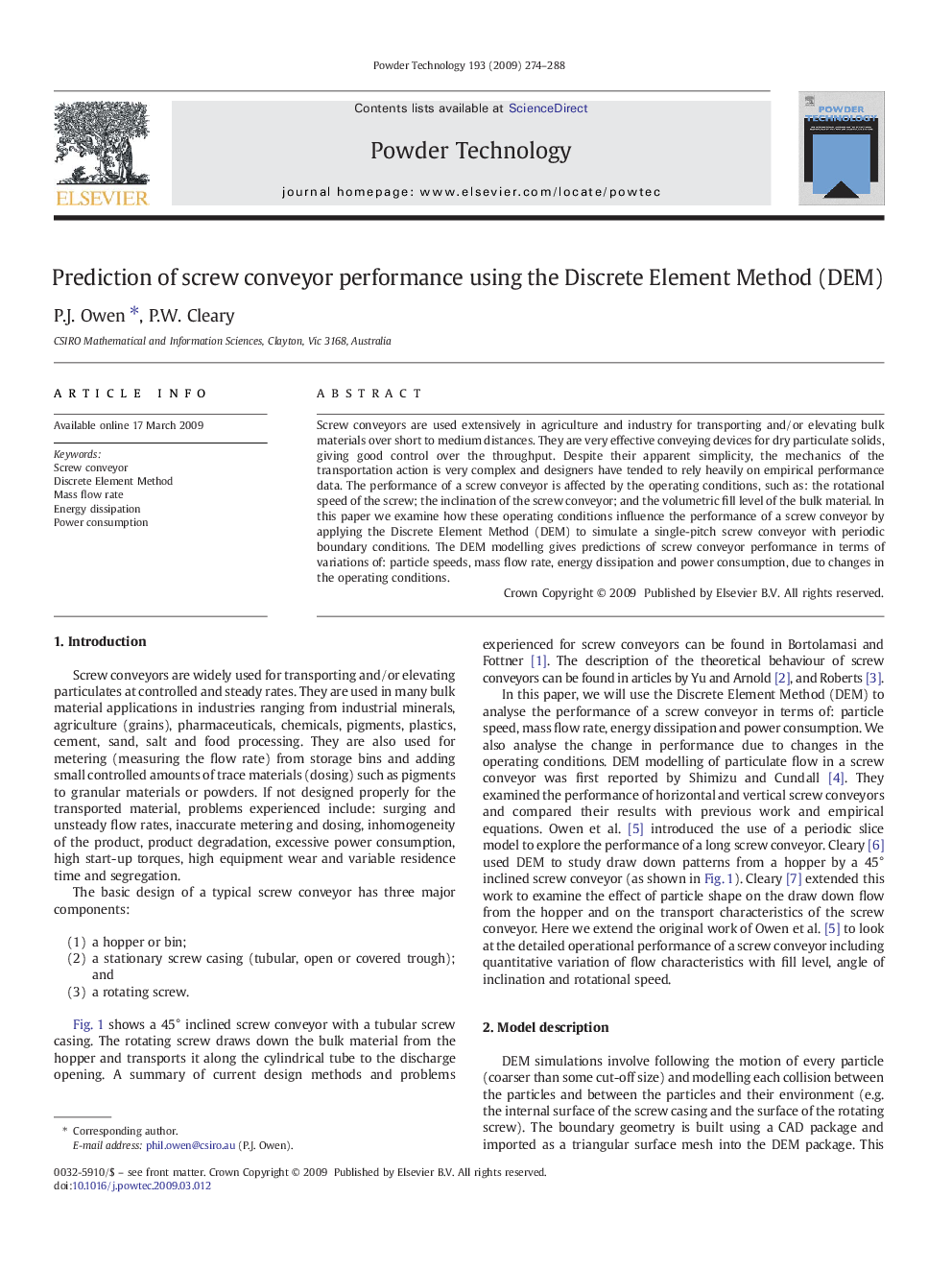| Article ID | Journal | Published Year | Pages | File Type |
|---|---|---|---|---|
| 237911 | Powder Technology | 2009 | 15 Pages |
Screw conveyors are used extensively in agriculture and industry for transporting and/or elevating bulk materials over short to medium distances. They are very effective conveying devices for dry particulate solids, giving good control over the throughput. Despite their apparent simplicity, the mechanics of the transportation action is very complex and designers have tended to rely heavily on empirical performance data. The performance of a screw conveyor is affected by the operating conditions, such as: the rotational speed of the screw; the inclination of the screw conveyor; and the volumetric fill level of the bulk material. In this paper we examine how these operating conditions influence the performance of a screw conveyor by applying the Discrete Element Method (DEM) to simulate a single-pitch screw conveyor with periodic boundary conditions. The DEM modelling gives predictions of screw conveyor performance in terms of variations of: particle speeds, mass flow rate, energy dissipation and power consumption, due to changes in the operating conditions.
Graphical abstractScrew conveyors are used in agriculture and industry for transporting or elevating dry particulates. Despite their apparent simplicity, the transportation action is very complex and designers have tended to rely heavily on empirical performance data. DEM is used here to predict screw conveyor performance (particle speeds, mass flow rates, energy dissipation and power consumption) due to changes in orientation, fill level and rotation rate.Figure optionsDownload full-size imageDownload as PowerPoint slide
